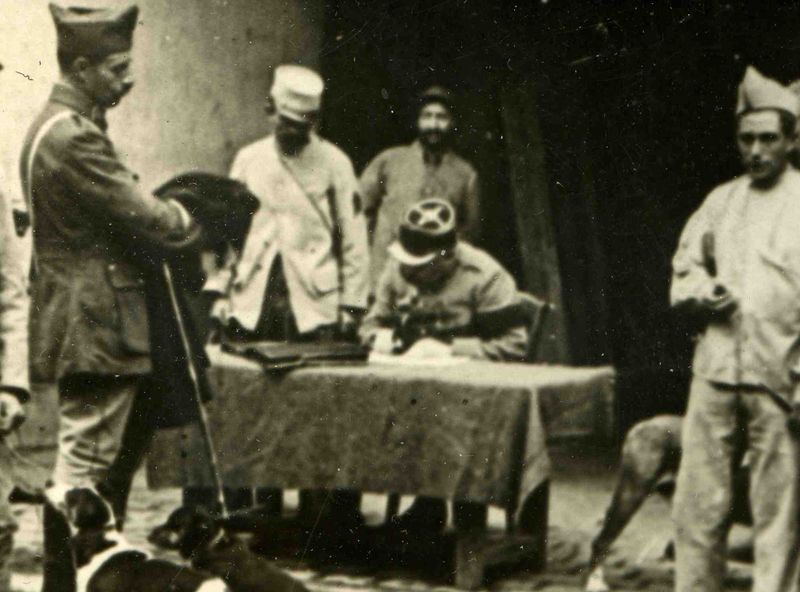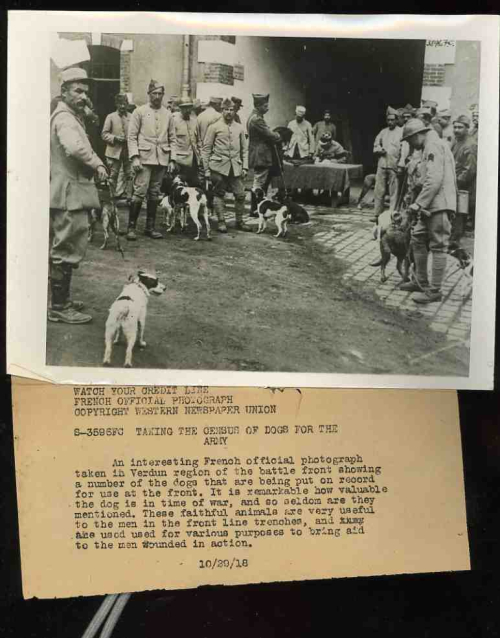JF Ptak Science Books Post 405
I wonder what the French officer sitting behind the table at the center background thought about at night, after his day was done. I wonder what it was that went through his head, his eyes fluttering, as he slipped into sleep? As the accompanying caption of this photo states, this was a census of dogs, a census of army dogs in the French army, taken at "the battle front" of Verdun, and dated 10 October 1918. Did he think of his duties expended throughout the day, and weeks and months? Counting dogs as a war effort may have been a hard thing to consume. Perhaps this officer had already seen his share of war, perhaps he had fought from 1914 and onwards, this position being relatively benign, a reward for years of impossibly difficult service in a bloody war. Or perhaps not.
"Taking the Census of Dogs for the Army", an official French war photograph and copyrighted and distributed by the Western Newspaper Union (a news photo service supplying photographic images for newspapers around the country), gives us a peek at what had been an largely untold story about digs in war. As it turns out, the French started early on in the war training and using dogs to track and aid wounded soldiers on the battlefield; the Germans did so too, their dogs rescuing some 6,000 wounded soldiers by war's end. And this continued a story of dogs in wars that's at least 2,000 years old.
 . The photograph, though dated 1918, was taken in 1916, during the horrific Battle of Verdun. IT was yet another enormous battle at Verdun, which had seen more than its fair share of military action over the centuries, owing to the city's strategic location on the Meuse River. The men in the photo look worn, as well they should--evidently, owing to replacements and rotation, something like 70% of the entire French army fought in this battle, with 24 French divisions fighting there. The French lost 161,000 men dead and 101,000 missing, with 216,000 wounded; the Germans lost about 142,000 dead and another 187,000 wounded. That's coming up close to 3/4-million men in one battle over several months in 1916, most of which were the victim of the 30 million rounds of artillery shells.
. The photograph, though dated 1918, was taken in 1916, during the horrific Battle of Verdun. IT was yet another enormous battle at Verdun, which had seen more than its fair share of military action over the centuries, owing to the city's strategic location on the Meuse River. The men in the photo look worn, as well they should--evidently, owing to replacements and rotation, something like 70% of the entire French army fought in this battle, with 24 French divisions fighting there. The French lost 161,000 men dead and 101,000 missing, with 216,000 wounded; the Germans lost about 142,000 dead and another 187,000 wounded. That's coming up close to 3/4-million men in one battle over several months in 1916, most of which were the victim of the 30 million rounds of artillery shells.




Comments